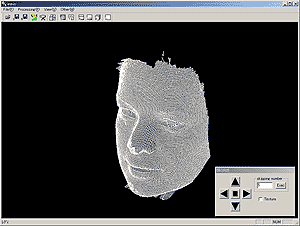This article is more than 1 year old
NEC demos Big Brother biometric phonebooth
3D facial recognition algorithm 95.5 per cent accurate
CeBIT : NEC's biometric team has developed a facial recognition algorithm they claim can match a captured image with a database with better accuracy than ever before.
It uses "geodesic illumination basis" or GIB descriptors as registered data. These are calculated from a 3D facial scan and negates factors - such as lighting and pose - that hinder traditional 2D with 2D comparisons. It does require that the person has been specially photographed in their 3D photobooth.
The technology is still in the prototype stage of developement, but NEC's initial test figures suggest the algorithm is 96.5 per cent accurate. Not good enough to stand alone for positive identifications, perhaps, but good enough to provide a shortlist of candidates for a person to check.
"Really, we're adding to the testing now," commented Alwin Gruenwald, a spokesman for the company, referring to the visitors to his CeBIT stand who had volunteered to be scanned by the booth.
The way it works is actually very neat: you sit in the booth and the machine takes four pictures of you, scrolling shadow lines up and down your face. These contour lines give the machine data about the 3D structure of your face, which it uses to build a mesh model of you. It then wraps your skin back around the mesh, and hey presto, a 3D model of your face which can be viewed from any angle.
 |
Because it is a three dimensional image, it has more points or reference to compare possible matches than a two dimensional one, so should be more accurate.
NEC says that the system can handle weight gain and loss, but aging is still a problem. For the systems to keep working at the quoted accuracy rate, people would need to get new facial scans every five to six years. ®
